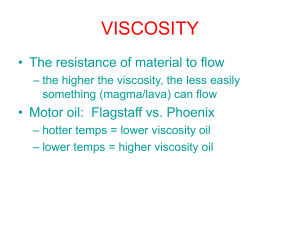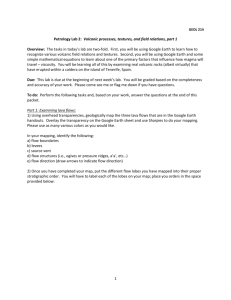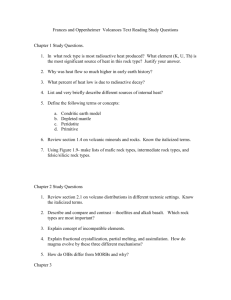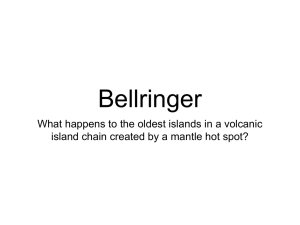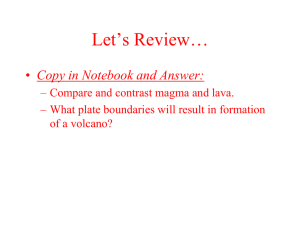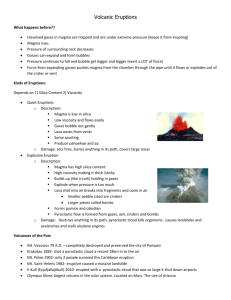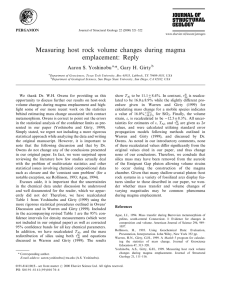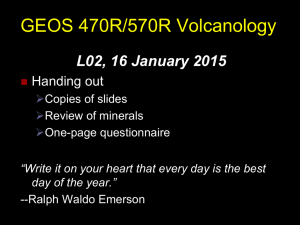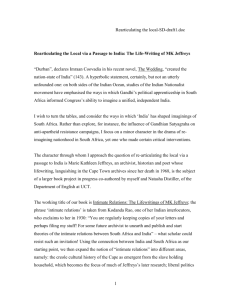Exercise: Properties of rhyolite magma
advertisement
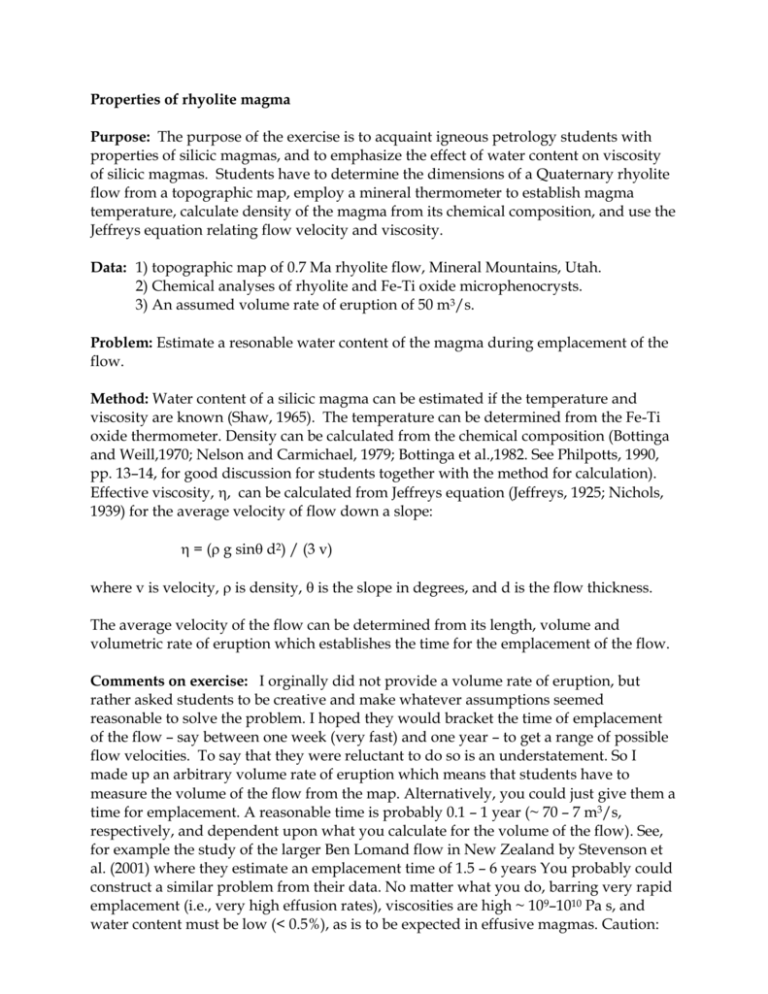
Properties of rhyolite magma Purpose: The purpose of the exercise is to acquaint igneous petrology students with properties of silicic magmas, and to emphasize the effect of water content on viscosity of silicic magmas. Students have to determine the dimensions of a Quaternary rhyolite flow from a topographic map, employ a mineral thermometer to establish magma temperature, calculate density of the magma from its chemical composition, and use the Jeffreys equation relating flow velocity and viscosity. Data: 1) topographic map of 0.7 Ma rhyolite flow, Mineral Mountains, Utah. 2) Chemical analyses of rhyolite and Fe-Ti oxide microphenocrysts. 3) An assumed volume rate of eruption of 50 m3/s. Problem: Estimate a resonable water content of the magma during emplacement of the flow. Method: Water content of a silicic magma can be estimated if the temperature and viscosity are known (Shaw, 1965). The temperature can be determined from the Fe-Ti oxide thermometer. Density can be calculated from the chemical composition (Bottinga and Weill,1970; Nelson and Carmichael, 1979; Bottinga et al.,1982. See Philpotts, 1990, pp. 13–14, for good discussion for students together with the method for calculation). Effective viscosity, , can be calculated from Jeffreys equation (Jeffreys, 1925; Nichols, 1939) for the average velocity of flow down a slope: = ( g sin d2) / (3 v) where v is velocity, is density, is the slope in degrees, and d is the flow thickness. The average velocity of the flow can be determined from its length, volume and volumetric rate of eruption which establishes the time for the emplacement of the flow. Comments on exercise: I orginally did not provide a volume rate of eruption, but rather asked students to be creative and make whatever assumptions seemed reasonable to solve the problem. I hoped they would bracket the time of emplacement of the flow – say between one week (very fast) and one year – to get a range of possible flow velocities. To say that they were reluctant to do so is an understatement. So I made up an arbitrary volume rate of eruption which means that students have to measure the volume of the flow from the map. Alternatively, you could just give them a time for emplacement. A reasonable time is probably 0.1 – 1 year (~ 70 – 7 m3/s, respectively, and dependent upon what you calculate for the volume of the flow). See, for example the study of the larger Ben Lomand flow in New Zealand by Stevenson et al. (2001) where they estimate an emplacement time of 1.5 – 6 years You probably could construct a similar problem from their data. No matter what you do, barring very rapid emplacement (i.e., very high effusion rates), viscosities are high ~ 109–1010 Pa s, and water content must be low (< 0.5%), as is to be expected in effusive magmas. Caution: Shaw’s viscosities are in poise. 1 poise = 0.1 Pa s. Shaw’s curves are reproduced in Carmichael et al., 1974, Fig. 4–6, p. 144. References: Bottinga, Y. and Weill, D., 1970. Densities of liquid silicate systems csalculated from partial molar volumes of oxide components. Am. J. Sci. 269, 169–182. Bottinga, Y., Weill, D. and Richet, P., 1982. Density calculations for silicate liquids – I. Revised mehod for aluminosilicate compositions. Geochim. Cosmochim.Acta, 46, 909–919. Carmichael, I. S. E., Turner, F. J., and Verhoogen, J., 1974. Igneous Petrology. McGraw Hill, New York, 739p. Jeffreys, H., 1925. The flow of water in an inclined channel of rectangular section. Phil. Mag., 49, 793–807. Nelson, S. and Carmichael, I., 1979. Partial molar volumes of oxide components in silicate liquids. Contrib. Mineral. Petrol., 71, 117–124. Nichols, B., 1939. Viscosity of lava. J. Geol., 47, 290–302. Philpotts, A., 1990. Principles of igneous and metamorphic petrology. Prentice Hall, Englewood Cliffs, N.J. 498 p. Shaw, H. R., 1965, Coments on viscosity, crystal settling, and convection in granitic magmas. Am. J. Sci.., 263, 120–152. Stevenson, R., Dingwell, D., Bagdassarov, N., and Manley, C., 2001. Measurement and implication of “effective” viscosity for rhyolite flow emplacement. Bull. Volcanol., 63, 227–237. Barbara Nash University of Utah 2003

